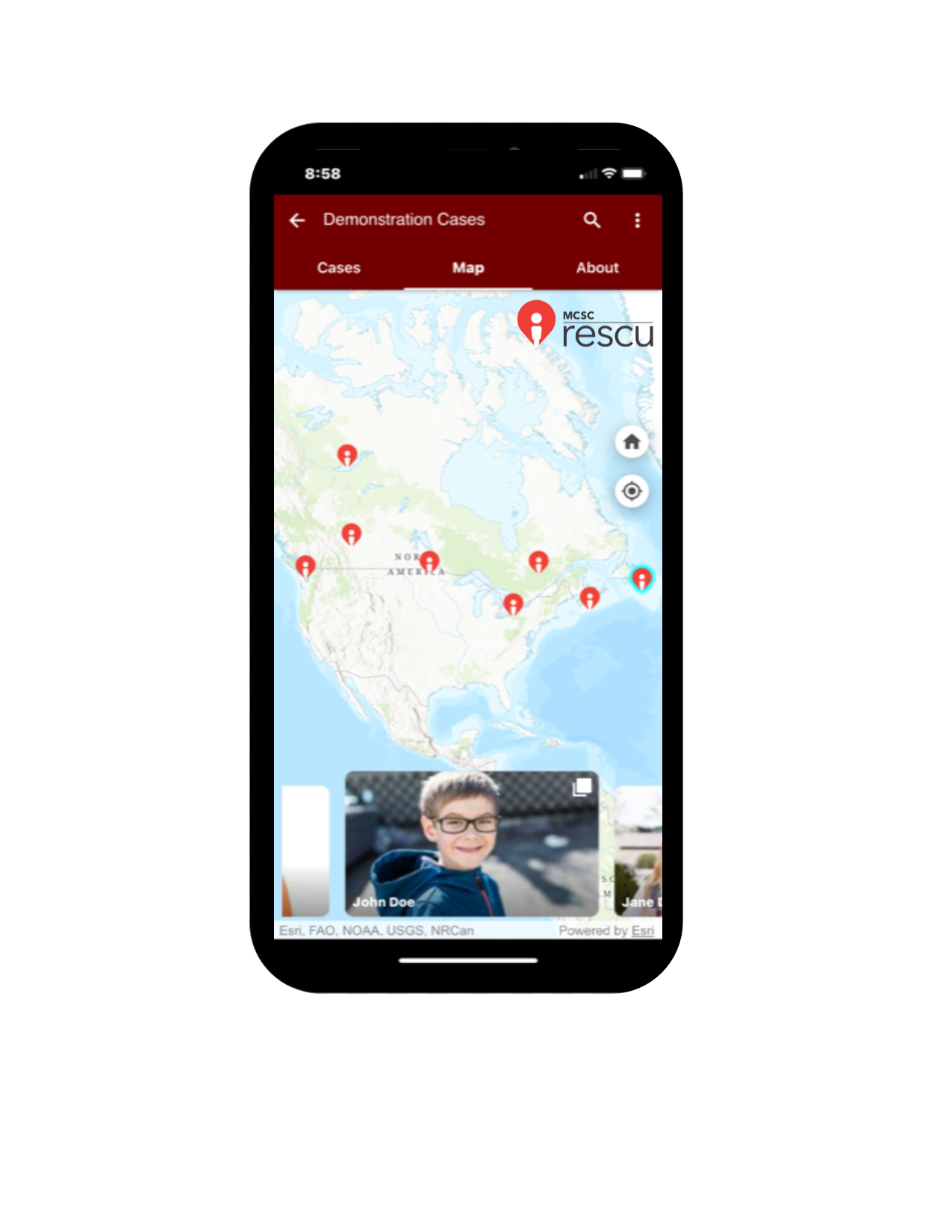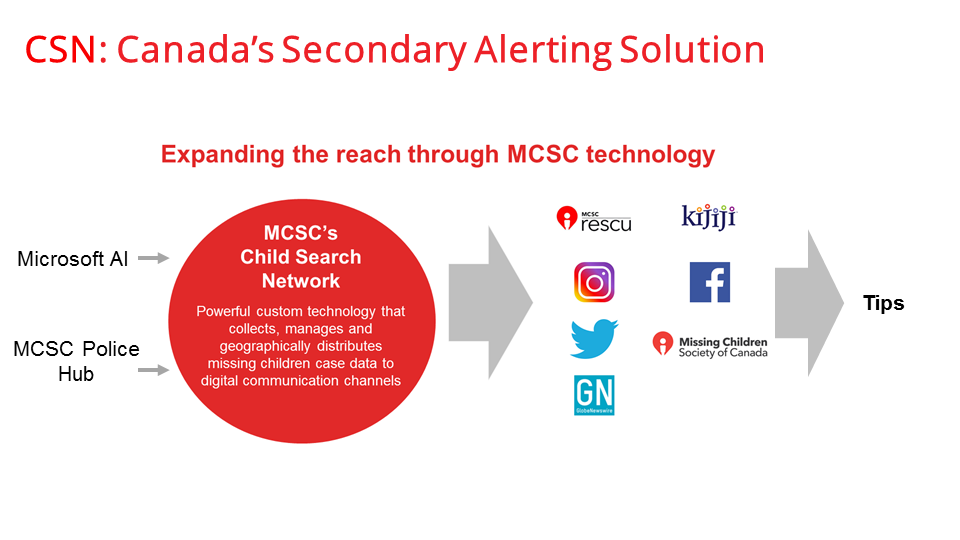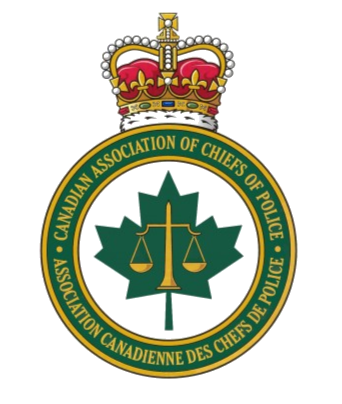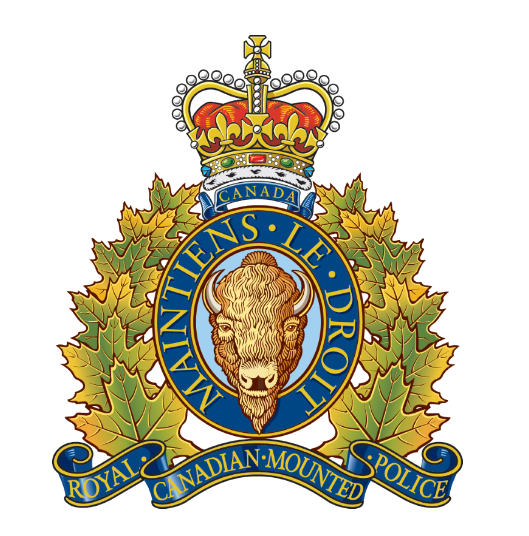Every minute counts when a child goes missing.
It’s important that authorities, such as police, be contacted so efforts can be concentrated around the search for that child. In many cases, alerts will be sent out to members of the public whose help is vital to finding the missing child.
Typically, there are two alert scenarios when a child goes missing: the AMBER Alert, which is used sparingly, or the Child Search Alert, which is initiated by the Missing Children Society of Canada (MCSC) upon being contacted by police.
AMBER Alerts
AMBER Alert is a rapid emergency child alert system that is activated by police when a child, under the age of 18, is believed to have been abducted and in imminent danger. AMBER Alerts are sent through the National Public Alerting system to mobile phones and on broadcast media, through social media, and on electronic highway signs. Alerts include the name and a description of the abducted child, who he or she might be with, and descriptions of any vehicle suspected of being used in the abduction. AMBER Alerts are rarely issued, and criteria depends on the province, but members of the public play a critical role in the search.
Child Search Alerts
Most cases of abducted or missing children do not fall under the AMBER Alert criteria, but police still need a connection with Canadian communities to get the word out. It's at that time police notices are transmitted via the Missing Children Society of Canada's networks to be shared and broadcast. MCSC’s notices are a vital element of the organization’s mandate as a partner with police in the search for missing children.
“We believe that this program has the potential to improve traditional search and investigation methods and offer law enforcement resources which, given budget restraints, prove challenging for all agencies within the police community." - Superintendent, Cliff O’Brien, Calgary Police Service
The MCSC’s Child Search Alerts includes people connected through social media, digital marketers, plus traditional and online media. The alerts are assembled to support police and allows them to share important information with the public. All information to the network comes directly from police.

Understanding the Child Search Network
Imagine taking a poster about a missing child and being able to tape it to more than a million telephone poles in less than five minutes.
Thanks to technology, innovation, and digital reach, not only is it possible, it's got a name: the Child Search Network - a communication tool with a series of components, including an app, social media, and other digital communication channels.
 The Child Search Network allows police departments across Canada to reach members of the community whose eyes, ears, and voices are critical in the search for a missing child.
The Child Search Network allows police departments across Canada to reach members of the community whose eyes, ears, and voices are critical in the search for a missing child.
One of the key elements of the Network is MCSC rescu, an easy-to-use application that was created for MCSC by Esri Canada and is populated, in part, with information on missing children cases pulled from databases by technology developed by Microsoft.
People can download MCSC rescu to their phones and other devices, where they see continually updated information from police on missing children in Canada. Active cases are divided by region and tips on specific cases can be submitted with one click on the app's case page. Critically, users are also invited to share that case page to their contacts, through networks, including text, email and other social media such as Instagram, Facebook and Twitter.
App users can also register to receive SMS alerts on cases in their area police deem critical, but that don't meet the specific criteria required to become an AMBER Alert.
As more people join the Child Search Network, by downloading the MCSC rescu app, following MCSC on social media, signing up for SMS alerts and sharing case information with their networks, it's easy to imagine the exponential reach one case file can have.
Police services are clear that help from the community is critical to their important work in finding missing children. And while they will point out it might only take one tip to bring a case to a positive conclusion, it's clear that the chance of reaching that outcome increases as the Child Search Network grows.
CACP Member communications: Calgary Police Service & Tsuut'ina Nation Police Service // Edmonton Police Service // Durham Regional Police Service // Kennebecasis Regional Police Force // Kingston Police Force // Port Hardy & Port Alice RCMP // Kawartha Lakes

The Child Search Network is endorsed by the Canadian Association of Chiefs of Police and the Royal Canadian Mounted Police
 The Canadian Association of Chiefs of Police (CACP) has identified the Child Search Network as a complementary tool and national system to be used in the search for all cases of missing children and youth that do not meet the strict criteria for the AMBER Alert national strategy for missing children.
The Canadian Association of Chiefs of Police (CACP) has identified the Child Search Network as a complementary tool and national system to be used in the search for all cases of missing children and youth that do not meet the strict criteria for the AMBER Alert national strategy for missing children.
The CACP Board of Directors approved motions endorsing the development, promotion, and implementation of MCSC's initiatives that look beyond traditional enforcement tools to engage the community and expedite the search for and location of missing children and youth in Canada.
CACP members, alongside the RCMP, have guided the development and execution of processes enabling the Child Search Network to support the police and their missing children cases.
 MCSC and the Royal Canadian Mounted Police (RCMP) have a formal agreement through a Memorandum of Understanding. Through this agreement, MCSC and the RCMP will work together to raise public awareness of issues related to missing children, assist in the prompt and safe return of missing children to their lawful guardians, and contribute to national and international efforts to obtain support for a cooperative global response to the issue of missing children.
MCSC and the Royal Canadian Mounted Police (RCMP) have a formal agreement through a Memorandum of Understanding. Through this agreement, MCSC and the RCMP will work together to raise public awareness of issues related to missing children, assist in the prompt and safe return of missing children to their lawful guardians, and contribute to national and international efforts to obtain support for a cooperative global response to the issue of missing children.
“MCSC is recognized globally as a pioneer and leader of harnessing technology to proactively protect children and support police,” CEO Amanda Pick said. “MCSC has long been a partner of the RCMP, and specifically the National Centre for Missing Persons and Unidentified Remains. This collaboration provides a powerful and elevated opportunity to lessen the risk to children and reduce the growing number of missing children cases in Canada. We thank the RCMP for this honour and look forward to our new level of partnership.”
 MCSC alongside the RCMP represents Canada as members of the Global Missing Children’s Network, Launched in 1998, the Global Missing Children’s Network (GMCN) is a collaborative venture bringing together 30 member countries on 4 continents to help recover missing and abducted children.
MCSC alongside the RCMP represents Canada as members of the Global Missing Children’s Network, Launched in 1998, the Global Missing Children’s Network (GMCN) is a collaborative venture bringing together 30 member countries on 4 continents to help recover missing and abducted children.
MCSC rescu Challenge
Access MCSC rescu, to see updated cases of missing children in Canada, leave a tip and sign up for SMS alerts. MCSC rescu is also available as an app in the Google Play Store and the Apple App Store.

